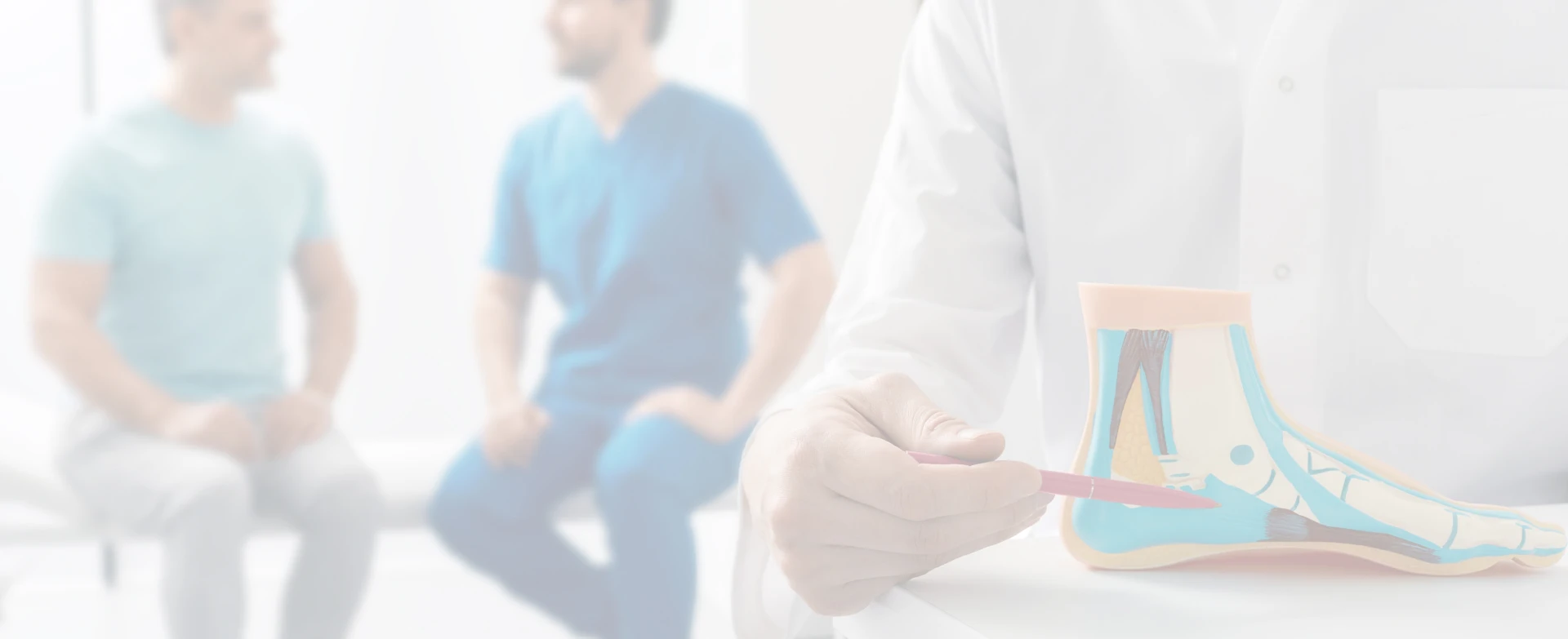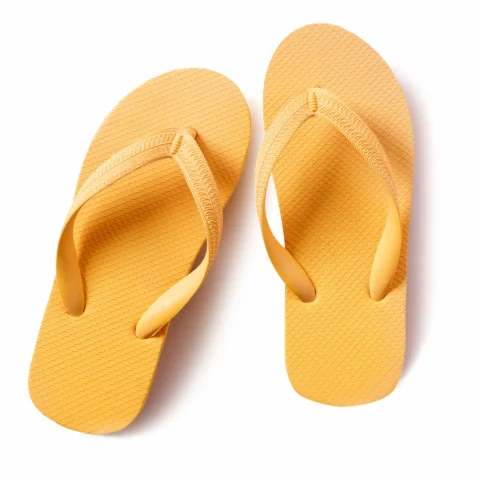
EUP
Managing and curing dry, cracked heels is simple and affordable at home with routine foot care and regular observation of foot health.
Having dry, flaky, or cracked skin on your heels can be both uncomfortable and unsightly if left untreated. Fortunately, there are a number of things you can do right at home to improve the appearance of your feet and eliminate the itching, cracking, and discomfort often associated with this all-too-common foot health problem.
In the following Essex Union Podiatry article, we will discuss the various causes of cracked heels and give you some easy tips to help you gain softer, healthier, and nicer-looking skin on the bottoms of your feet. Additionally, we will discuss when it might be appropriate to see a podiatrist and how to make an appointment.
What Causes Dry, Cracked Heels?
Cracked heels can appear for a number of reasons, but the condition usually starts when skin on the feet dries out and begins to thicken. Over time, the dry skin will discolor and appear yellow or slightly brown, become flaky, and start to hurt. In medical terms, cracked heels are known as heel fissures.
While it’s common to develop cracked heels during the winter–especially in climates where weather gets extremely dry–it’s also common to develop cracked heels during the summer months when it’s more typical to walk around barefoot or in open-soled shoes.
Here are other reasons cracked heels can develop:
- Repeatedly standing for long periods on hard surfaces
- Fungal infections
- Wearing bad-fitting shoes
- Eczema
- Obesity, which puts additional pressure on your heels
- Aging
- Hypothyroidism
- Psoriasis
- Vitamin deficiencies, including vitamin C, vitamin B-3, and vitamin E
When Do Dry, Cracked Heels Become Problematic?
Over time, cracked heels can become itchy, red, and inflamed. If left untreated, the cracks can even start bleeding and become extremely painful–especially if dirt and debris enter the cracks and infect the foot.
Instead of ignoring symptoms, you can improve the skin on your heels by following the tips below and moisturizing your feet regularly once you’ve resolved the problem. But please note: If you have diabetes or another chronic illness that affects foot health, schedule an appointment with one of our podiatrists to help treat your cracked heels.
Six Ways To Treat Cracked Heels At Home and Improve Foot Health
#1 Soak and Exfoliate Your Feet
It’s time to slow down and pamper your feet (and yourself) for a change! Get something to read, put on soothing music, or find a show on TV and follow these instructions:
- Fill a basin with lukewarm water and mild soap. Soak your feet for up to 20 minutes.
- Using a pumice stone, foot brush, or loofah, gently exfoliate the skin on your feet without rubbing too intensely or breaking the skin.
- Pat your feet dry with a towel.
- Apply moisturizing cream or balm to your feet.
#2 Moisturize Your Feet Daily
After your exfoliation treatment, moisturize your feet each day with cream or balm to soften the skin and prevent dry skin from reforming. The best time to add balm or cream is after a shower or bath to help lock in moisture.
When purchasing a cream or balm, look for ingredients that contain moisturizing properties such as shea butter, urea, coconut oil, alpha-hydroxy acid, or salicylic acid. If you’re not sure which brand to use, ask one of our podiatrists for a good recommendation.
Contact us now to discuss your foot and ankle health needs.
#3 Wear 100% Cotton Socks to Bed (and Moisturize)
At this point, you are likely seeing the skin on your heels improving dramatically. To continue softening it, get out a pair of cotton socks, your moisturizing cream or balm, and some petroleum jelly when you’re ready to go to sleep for the night.
Apply cream or balm to your feet, followed by petroleum jelly, and put your socks on. Wear the socks overnight. Then, when you wake up, remove the socks and clean the petroleum jelly off your feet. Your feet should be looking and feeling much better.
#4 Switch to Mild Soaps
Some brands of antibacterial soaps and gels are notorious for drying skin out and even causing allergic reactions. If you’re using a harsh, highly-fragranced soap for daily cleansing, switch to a mild soap known to be gentle on the skin.
#5 Apply Liquid Bandages to Your Feet
Do you still have cracks in your heels? If so, try applying a liquid bandage to seal the cracks and prevent dirt and debris from entering the cracks and causing infection. You can find liquid bandages in most pharmacies and retail stores selling hygiene products.
Most liquid bandages are easy to apply and don’t fall off your feet like physical bandages do. They also help reduce future cracking. Just make sure to read the directions first and only apply to clean, dry feet.
#6 Choose Supportive Footwear
Your choice of shoes can make a big difference as far as whether your feet experience dryness, thickening, and cracking. That said, if you wear tight or stiff shoes, you may want to switch to a pair with softer fabric. Also, while you’re treating cracked heels, don’t wear flip-flops or open-back shoes because dirt and dust can get into the cracks and make them even more dry.
When Should I See a Podiatrist?
If you’ve tried at-home treatment and you don’t see your heels improving in a week or so, you may want to make an appointment with a podiatrist. Additionally, if you haven’t tried treatment yet and you notice deep, painful cracks, yellow or brown calluses along the heels, bleeding, or signs of infection, please see a podiatrist.
Once you arrive at your podiatry appointment, it’s best that the podiatrist completes an assessment of your condition to determine what’s causing cracked heels to develop. This will help you determine optimal long-term care and prevent cracks from recurring on your heels.
Treatment to your cracked heels most often involves debridement. With this procedure, a podiatrist will use a metal scalpel or similar tool to cut away the tough, dead skin from the bottom of your feet. It may sound unpleasant, but a podiatrist can perform this pain-free since the skin being removed is dead. Once complete, the podiatrist may also use a sander to remove any remaining dry skin. Additionally, if your skin is infected, a podiatrist will generally need to dress the wound and prescribe an antibiotic.
Other treatments for cracked heels can include strapping, padding, or applying a skin adhesive to help the skin heal. It’s also common for a podiatrist to assess your footwear to determine whether you need better-fitting shoes or custom orthotics, which will ultimately reduce pressure on your heels.
Need a Podiatry Appointment?
At Essex Union Podiatry, we are Union, NJ podiatrists that treat patients with dry, cracked heels on a regular basis. Most issues are easily resolved with a simple procedure, and we make sure everyone’s experience is comfortable and pain-free.
To schedule your appointment, please visit our website or call us at 973-313-5601.
Our advanced podiatry treatments can help relieve your foot and ankle issues.

